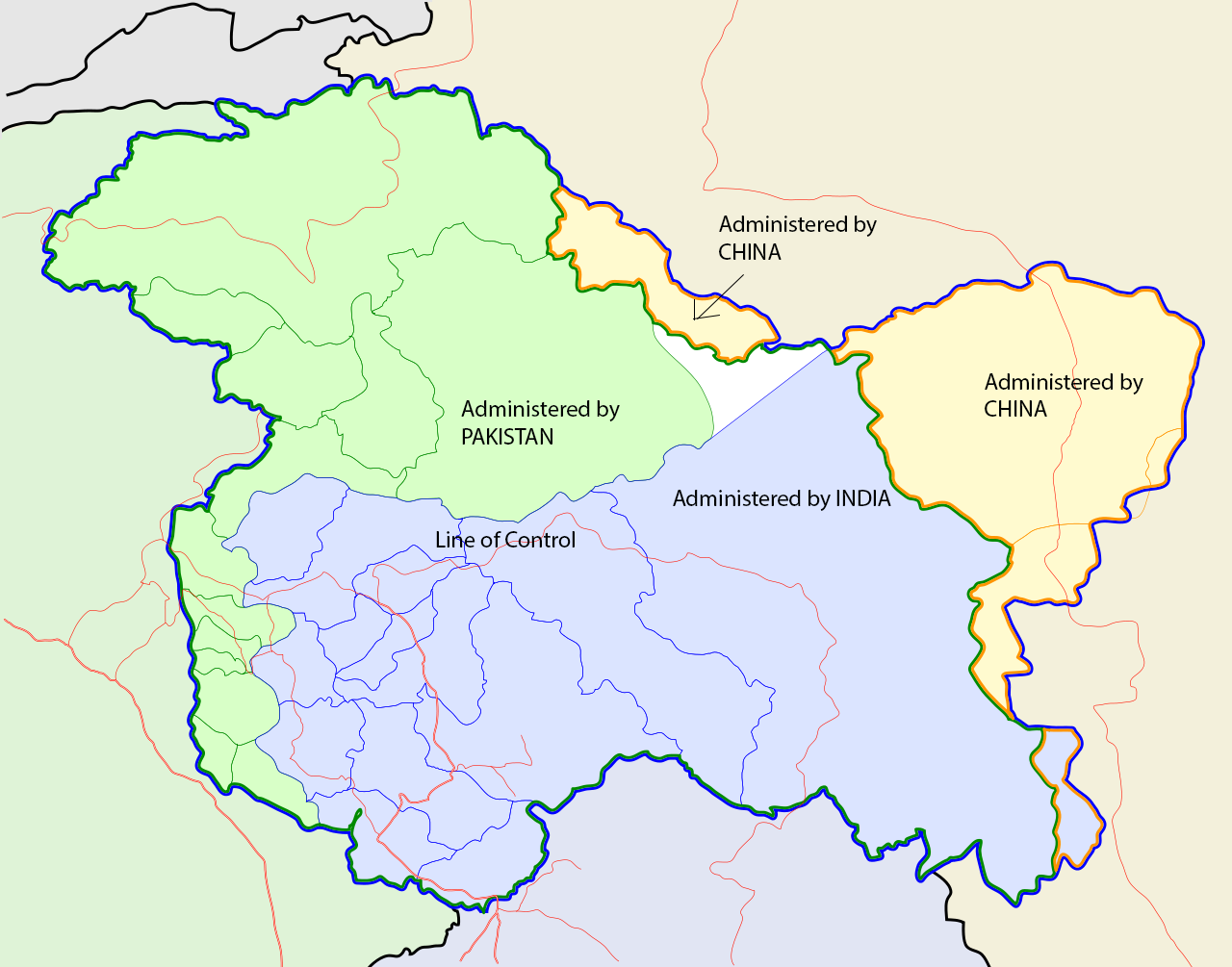Station 4B – Kashmir case study
A nice documentary about the Kashmir conflict from a nationalistic perspective.
Religious groups:
- Muslims of Pakistan
- Muslims and Hindus of India
Key events:
- 1947 – Partition and First Kashmir War – Jammu and Kashmir was split on joining Pakistan, a Muslim-majority state, or India, a Hindu-majority state. India takes over Jammu, the Kashmir Valley, and Ladakh, while Pakistan takes Azad Kashmir and Gilgit-Baltistan. The way the war ended set the Line of Control, an indefinite border arrangement.
- 1965 – Second Kashmir War – Indian forces defeat Pakistani forces, but no borders really changed.
- 1971 – Indo-Pakistani War – Although it doesn’t pertain directly to Kashmir, this event contributes to Hindu-Muslim and Indo-Pakistani tensions.
- 1989 – Islamic Insurgency – Pakistani insurgents invade the Indian state of Jammu and Kashmir, causing civilian casualties. The insurgents were met by Indians, who pushed them back. This caused more tensions between Muslims and Hindus and even Buddhists.
- 1989 – Pandit exodus – Many Pandit Brahmin Hindus flee Jammu and Kashmir because of persecution.
- 1999 – Third Kashmir War – Pakistani forces invaded Kargil but ultimately backed off after Indian and international pressure. Also, both sides touted their nuclear capabilities at each other.
- 2005 – Earthquake – Some insurgents were shipped off to India disguised as humanitarian aid, causing concerns by Indians to their safety.
Discussion questions
1) What are the historical origins of the conflict over Kashmir?
Jammu and Kashmir used to be an Indian “princely state” (or ruled by a local prince) which had ties to the Indian National Congress (INC) but also was predominantly Muslim. In India, Hindus and Muslims usually clashed with each other due to religious conflict. In 1947, the Mountbatten plan called for the United Kingdom to allow India to become independent, but due to religious tensions, the plan called for Muslim states to join Pakistan and Hindu states to join India; nonetheless of the precedent, princely states were free to choose which country to join. Kashmir’s hands were tied and decided to not join either at all, because of its connection with the INC and Muslims. This caused Indian and Pakistani forces to invade Kashmir and to try and capture as much of the state as possible for each country.
2) How are religious factors involved in the conflict?
India, a Hindu state, and Pakistan, a Muslim state, were created due to religious conflict. Jammu and Kashmir is majority Muslim but is mostly part of Hindu India. Therefore, Pakistan feels that because both Kashmir and itself are Muslim that Kashmir should completely join Pakistan. However, India won’t give up the state, because Jammu is majority Hindu and was traditionally aligned with Kashmir. Since India is majority Hindu, Pakistan feels that Hindus are the enemy, and therefore cause Muslims and Hindus to conflict with each other.
3) How important were international religious and political forces?
No international support has been seen among the Kashmir conflict. However, neighboring countries, like China, Russia, Afghanistan, Uzbekistan, and Tajikistan, are anxious about the safety of their countries as a result of India and Pakistan’s antagonism towards each other. Even though some of these states are Muslim as well, they fear Pakistan is harboring Islamic insurgents, who would be recognized as terrorists internationally.
In addition, many Kashmiris are conflicted about this conflict because India currently uses nationalism, not the Hindu religion, to unify its citizens, especially those located in Jammu and Kashmir. Because nationalism does not regard religion but rather where somebody lives, pride has also turned into Indians versus Pakistani, per nationality, not Hindus versus Muslims, which is per religion.
4) What role do socioeconomic factors play?
The socioeconomic factors that play into this conflict are nationality and religion. India and Pakistan both push nationalistic propaganda into the region to support and promote their own countries, while Pakistan underlines the presence of Muslims in the region as the reason why Jammu and Kashmir should be incorporated into Pakistan. The Indian-administered portion of Jammu and Kashmir is currently half-Muslim, half-Hindu, with a Muslim majority. However, this even blend of two different religions can cause religious tensions and might strike every citizen’s religion as the discriminant of allegiances.
5) How does religion intersect with these other factors in driving outcomes?
Although today India and Pakistan try to drive nationalistic forces into its citizens, religion is still at the core of the conflict because the region was selected by Pakistan for forceful inclusion due to its Muslim majority. Pakistan feels that religion intersects with nationality because the country is effectively Muslim and therefore any Muslim region in India should be theirs. This will be very influential when the situation resolves, if it ever will.
